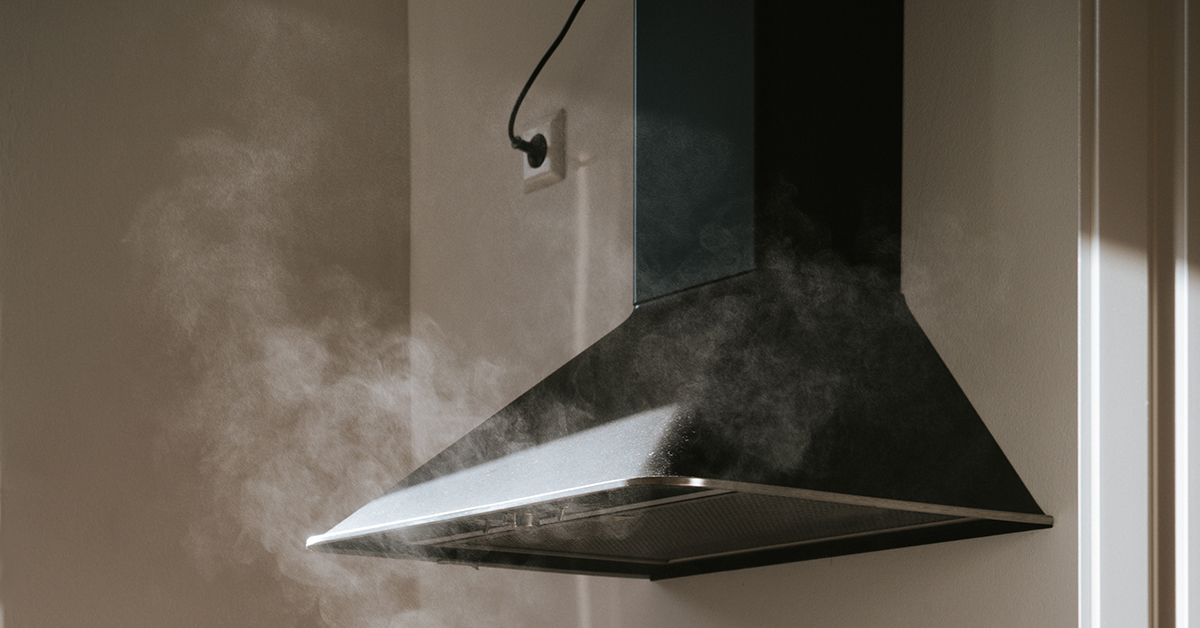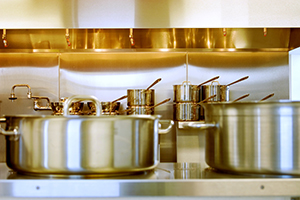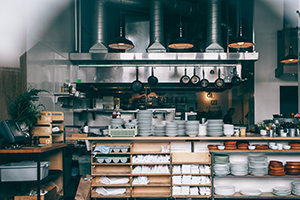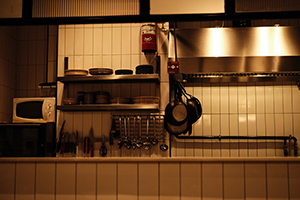
Fire Prevention Is An Everyday Priority
October 24, 2023
Keeping Things Clean and Safe, Especially Your Range Hood
Keeping fire prevention top-of-mind is critical for your commercial kitchen. First and foremost, it’s everyone’s responsibility to be aware and vigilant every day about fire-safe practices. One area that often is overlooked in the context of fire safety is cleanliness, especially when it comes to kitchen appliances like range hoods. In this blog, we’ll shed light on the vital role cleanliness plays in fire prevention, focusing on the function of range hood fire suppression systems and the steps needed to restore them post-discharge.
Range hood fire suppression systems are critical components of any kitchen where open flames are used, such as in stovetops. They are designed to swiftly detect and suppress fires that might occur in the cooking area, effectively preventing them from spreading and causing significant damage.
What Happens When a Range Hood Fire Suppression System Goes Off?
When a fire breaks out, the heat-sensitive elements of the fire suppression system are triggered. This activation causes a chain of events designed to quell the fire. Typically, a fire-extinguishing agent, such as a wet chemical, is discharged from nozzles strategically placed in the range hood. This agent effectively suppresses the fire by cooling the flames and preventing re-ignition.
The Importance of Cleanliness for Fire Prevention
A clean kitchen, especially a well-maintained range hood, is fundamental to fire prevention. Grease, oil, and other residues that accumulate in and around the range hood can ignite easily and escalate into a dangerous fire. Proper cleaning not only maintains the efficiency and longevity of your appliances but significantly reduces the risk of a devastating kitchen fire.
Tips on Keeping Your Range Hood Clean:
In this section, we offer essential tips for maintaining a clean and fire-safe kitchen, with a specific focus on your range hood—a vital component in preventing potential kitchen fires. Implementing these guidelines will not only ensure the longevity and efficiency of your appliances but also significantly reduce the risk of dangerous kitchen flare-ups.
Regular Cleaning Routine: Set up a regular cleaning schedule for your range hood. Aim to clean it thoroughly at least once a month or more frequently if you do a lot of cooking.
Use Appropriate Cleaning Agents: Choose cleaning agents that are suitable for the material of your range hood. For instance, mild detergents or specific cleaners recommended by the manufacturer.
Clean Filters: Range hood filters trap grease and other particles. Remove and clean these filters according to the manufacturer’s instructions. Dirty filters can reduce the effectiveness of the range hood.
Clean the Hood Exterior: Wipe down the exterior of the range hood regularly. Grease and grime can accumulate on the surface, becoming a fire hazard if not cleaned.
Inspect for Wear and Tear: Regularly inspect the range hood for any signs of wear, loose connections, or damage. Promptly address any issues to maintain optimal functionality.
Incorporating these tips into your routine will transform your kitchen into a safer space, minimizing fire hazards and enhancing overall hygiene. Remember, a clean and well-maintained kitchen is not only a pleasure to work in but a crucial step towards a secure and fire-smart business.
What to Do After the Range Hood Fire Suppression is Discharged
In the unfortunate event that your range hood fire suppression system is activated, certain steps are necessary to restore everything to a functional state.
After a range hood fire suppression system has been activated and the flames subdued, a careful and methodical process must ensue to restore both safety and functionality. This section outlines the necessary steps to follow once the system has done its crucial job in averting a potentially disastrous kitchen fire.
- Safety Assessment: Ensure the fire is fully extinguished and there is no immediate danger. Your safety and the safety of others should always be the priority.
- Isolate the System: Once the fire is out, isolate the range hood fire suppression system by turning it off to prevent any unintentional discharges.
- Contact Professionals: Reach out to a qualified technician or the company responsible for maintaining the fire suppression system. They will need to inspect and service the system to ensure it’s ready for use again.
- Cleaning and Restoration: Clean any residue left by the fire suppression agent. Thoroughly clean and disinfect the affected area to ensure it is safe and ready for use. Replace any damaged components as recommended by the technician.
- Test and Recharge: After the system has been cleaned and restored, it needs to be tested to confirm its effectiveness. If necessary, recharge the system with the appropriate fire-suppressing agent.
Prompt action following a range hood fire suppression discharge is vital to ensure a quick return to a safe and operational kitchen environment. By following the recommended steps diligently, you can swiftly restore your fire safety measures and cooking routine with confidence.
Stay Clean to Stay Safe!
Fire prevention is a collective responsibility that involves careful maintenance, regular inspections, and adherence to safety practices. Keeping your kitchen and appliances, especially your range hood, clean is a fundamental aspect of fire prevention. By embracing good cleaning habits, you can contribute to a safer business, reducing the risk of devastating fires. Stay safe, stay informed, and prioritize fire safety every day of the year.
Get all the information you need for fire prevention and safety, including access to professional assessments and maintenance by visiting us at SafeCareCorp.com.


